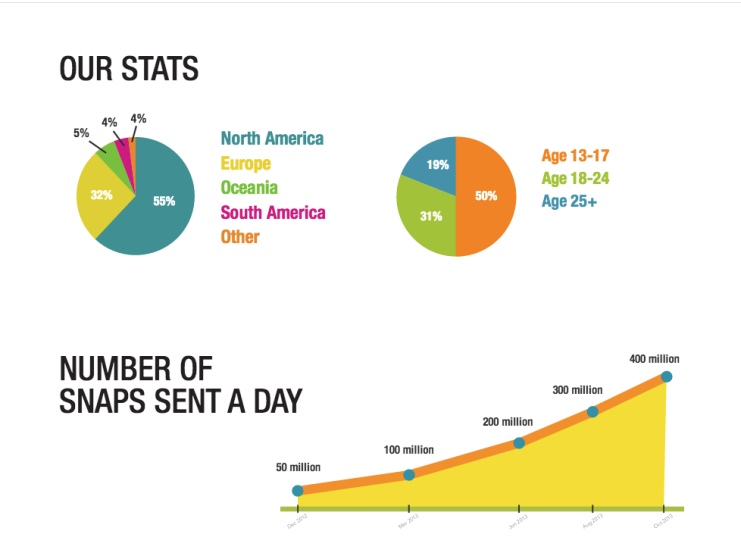Snapchat came onto the social scene in September 2011, and while it’s been around for quite some time, I’ve neglected it on this blog. I don’t have a problem with Snapchat, I’m just cautious about jumping on a new platform for the sake of doing so. I wanted to take time to understand Snapchat and how consumers use it.
After a couple recent updates though, and stats that are hard to ignore, I decided it was time to take a good, hard look at the platform. Here are the platform stats:
So let’s start at the beginning. If you aren’t familiar with the platform, Snapchat prides itself on being a “fast and easy mobile conversation”. It’s a mobile messaging app where users can take pictures, add their own text and art and then set them to expire in one to 10 seconds.
The app started off without a lot of bells and whistles: Send a photo to a friend that will eventually disappear. It’s easy to understand why it was hard for teams to grasp where they could play on such an intimate (no pun intended, sorry) platform. Since October of 2013 though, Snapchat has been making brand-friendly changes. Let’s walk through some of the changes you should know about:
October 2013- Stories
Snapchat Stories are a way to add Snaps together to create a narrative. Think flipbook. When you add a Snap to your Story, it lives for 24 hours under “Recent Updates” where friends can explore it at their leisure before it disappears. This is the key for brands: Instead of having to send a Snap to every Snapchat friend individually (and spamming them), users and brands can now add a Snap to their Story that lives for 24 hours for their entire Snapchat audience to consume.
Brands and teams can now reach the masses on Snapchat and not worry about one-on-one messaging. This update eliminates tedious work for brands, opens the door for long-form content and allows teams to push out content without annoying their fans (since fans decide if they want to view it). Here’s what a Story looks like from a team:
